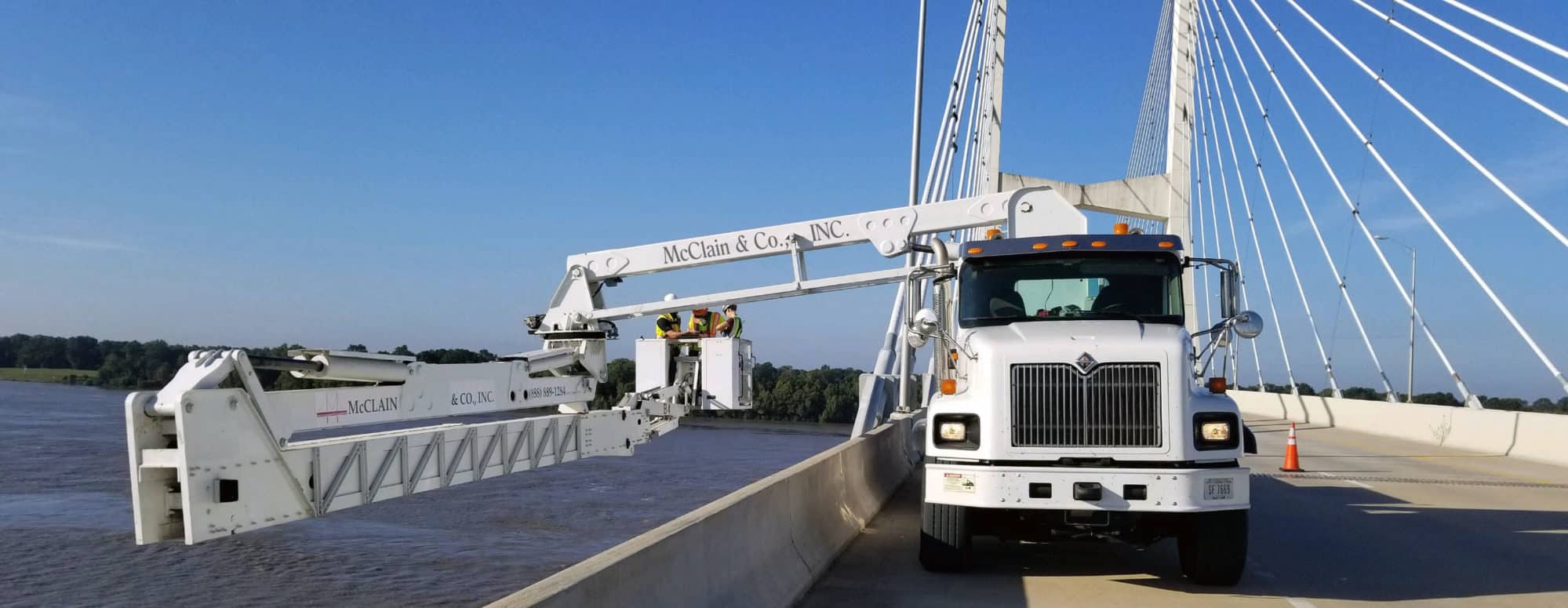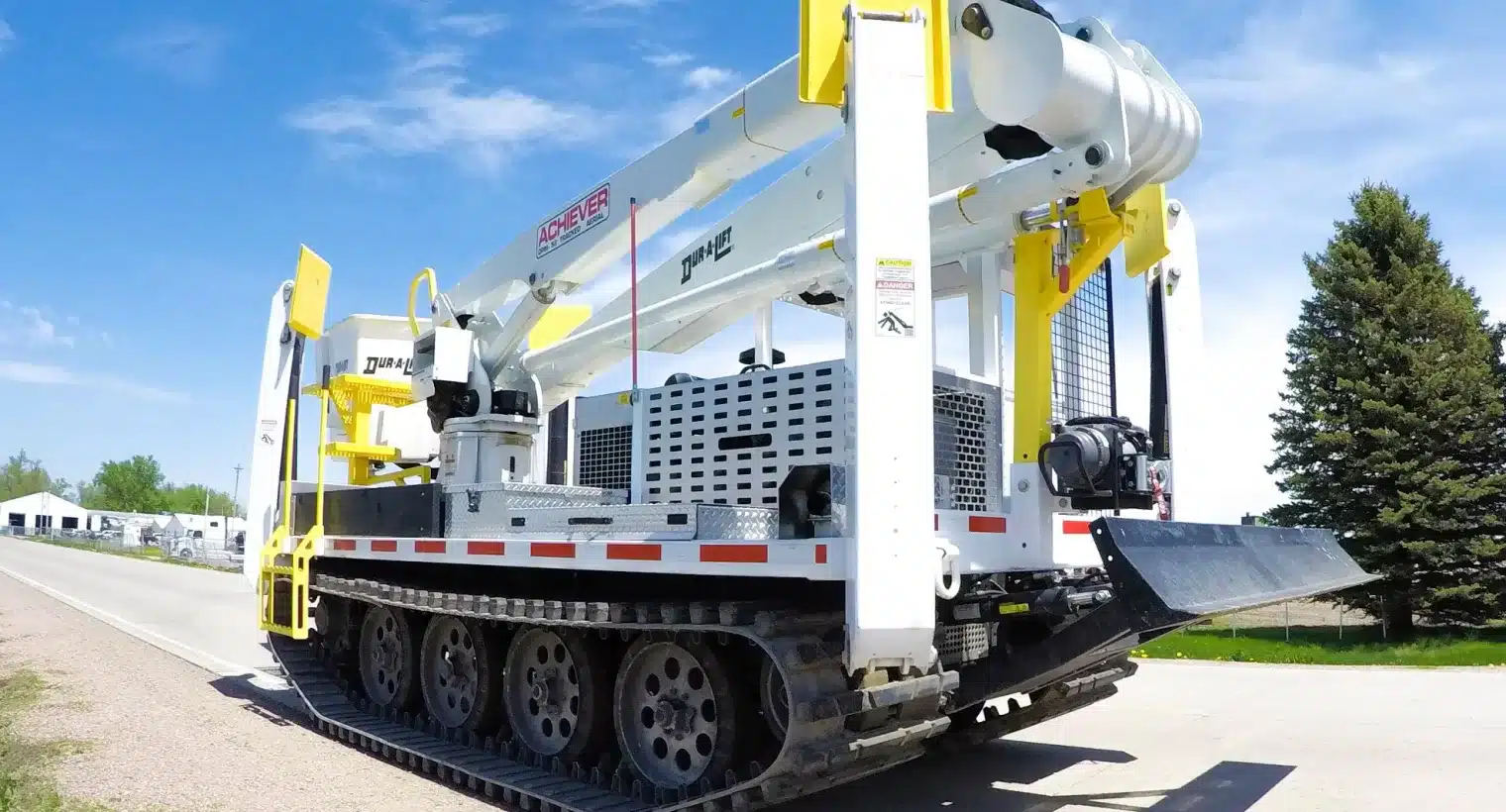Bucket trucks have a long and fascinating history of innovation and adaptation.
They have been used for various purposes since the early 1900s, when they were first invented to help fruit pickers harvest cherries without ladders.
They were called “cherry pickers” because of this original use, but they soon became popular with other professions as well. Over the years, bucket trucks have also been known by many other names, such as aerial lifts, man-lifts, boom trucks, elevated work platforms, aerial work platforms, and basket cranes. Some of the larger bucket trucks with telescopic capabilities are also called “squirt booms” or “stick booms” in the heavy equipment industry.
How Bucket Trucks Changed the World: A Short History
Who invented the first bucket truck? The answer is not clear, as different manufacturers and inventors claim to have designed and built the first boom truck, or aerial work platform. Some of the possible candidates are:
- Walter E Thornton-Trump, who created a device in 1951 that would later be called a cherry picker.
- T.E.Y. Manufacturing, a company in Connecticut that reportedly produced and sold the Sky Lift Bucket Truck starting in 1950.
- Jay Eitel, the founder of Telstra Corporation in California, who designed a maneuverable, telescopic steel structure mounted on a truck chassis in 1944.
- Van Ladder®, a company that built an elevating ladder with a narrow bucket attached at the top in 1968.
The origin of the bucket truck may never be definitively established, but we know that they became widely used by 1964. Bucket trucks have a long and fascinating history of innovation and adaptation.
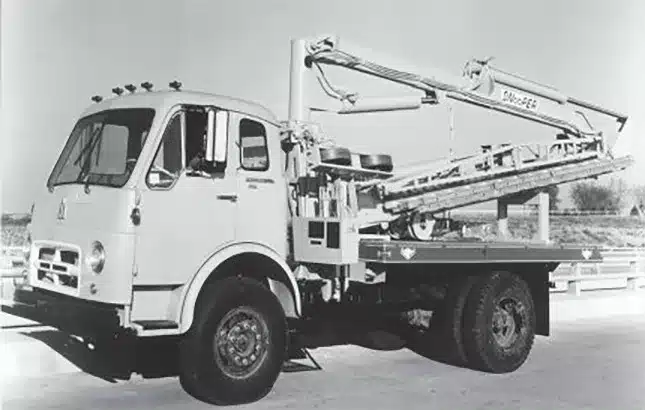
The Birth of the SNOOPER™ Under Bridge Inspection Bucket Truck
In 1964, a new type of bucket truck was invented: the SNOOPER™ bucket truck. This vehicle was designed and manufactured by Paxton-Mitchell Co., LLC. to provide worker access down and beneath bridge decks. It was the world’s first “underbridge inspection bucket truck.”
Before the SNOOPER™ bucket truck, most bucket trucks were used for overhead access and in a variety of settings and industries. For example, utility companies, municipal agencies, building painters, window washers, signage and lighting installers, construction workers, miners, and foresters all used bucket trucks to reach hard-to-reach areas. However, these bucket trucks were not suitable for inspecting the underside of bridges, which required a different kind of platform and boom.
The SNOOPER™ bucket truck solved this problem by having a platform that could be extended and rotated to reach under the bridge deck. The boom was also telescopic and articulate, allowing for greater maneuverability and flexibility. The SNOOPER™ bucket truck made underbridge inspection easier, safer, and more efficient. It was a groundbreaking innovation that changed the world of bridge maintenance.
When Wheels aren’t Enough: Track Mounted Bucket Lifts
Traditionally bucket lifts are usually mounted on trucks or vans with wheels, which work well for most situations and conditions. However, some environments and worksites need more accessibility than wheels can offer.
That’s why some bucket lifts use tracks instead of wheels.
Tracks are large assemblies that look like those on farms, mines, or military vehicles. They help bucket lifts move over surfaces that have problems like slope, traction, or terrain. They also reduce the ground pressure, which is the force that a vehicle’s tires put on the ground. Ground pressure affects how well a vehicle can move over soft ground.
Some worksites have rough, uneven, or swampy terrain. They may have steep hills, water, ice, snow, or rocks. These worksites are not suitable for wheel-mounted bucket lifts, which may get stuck or tip over. So, a track-mounted bucket lift can be a better solution for these jobs.
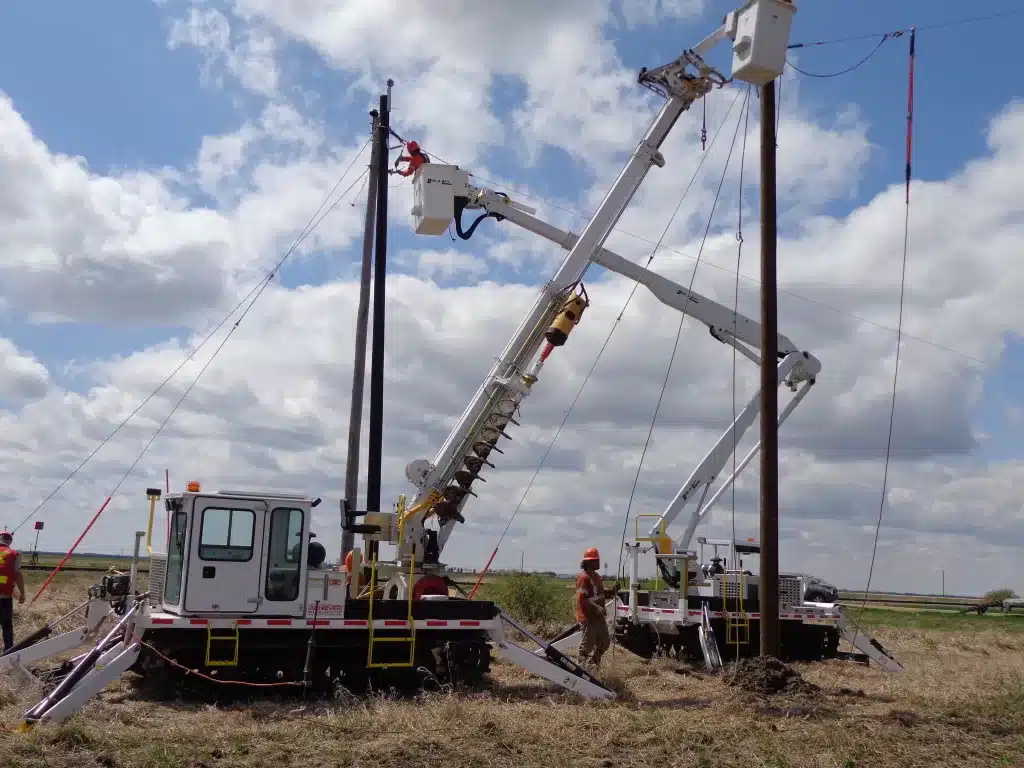
Types of Jobs that Can Require a Track Mounted Bucket Lift
The actual work being performed by technicians, mechanics, and other workers while using a track-mounted bucket lift is often no different than that carried out in a traditional bucket truck. However, the terrain and lay of the ground can be strikingly different.
Here are some common examples of the types of work that often require a track-mounted bucket lift:
Tree trimming and arborist work.
Arborists often work in residential and commercial settings that allow them to make use of bucket trucks. However, they also find themselves in settings where the trees are located on hillsides, along gullies and ravines, or across rugged and damp terrain.
Using a track-mounted bucket lift means they can perform tree planting and removal services, as well as tree trimming and pruning, regardless of the conditions or terrain.
Light pole installation, maintenance, and repairs.
Many landscapes across the United States are filled with picturesque wilderness areas and rugged terrain. And many of these places also have streetlights and other types of pole lighting that are in hard-to-reach areas.
Yet they, too, need to be maintained and repaired. Oftentimes these light poles are situated in spots that cannot be accessed with a truck, so a track-mounted bucket lift is necessary.
Overhead utility repair and maintenance work.
Power lines and telephone wires still run across much of the country, and they all require repairs, replacements, and ongoing maintenance. But not all of them can be gotten to with a standard pickup truck-mounted boom lift.
On the other hand, a track-mounted unit makes accessibility easy and achievable for utility crews and others who must reach this equipment.
Flagpole repair and maintenance work.
Many enterprises and commercial structures use various flags outside their campuses, which can often be reached with scissor lifts and other aerial access equipment. But when these flagpoles are positioned on hillsides and similar terrain, access can be challenging for even a truck.
Ski lift and aerial tramway repair and maintenance.
The very nature of ski lifts and aerial tramways, or gondola lifts, requires access up hills and across often rugged and challenging terrain. And these structures require regular maintenance, repairs, upkeep, and cleaning.
With the ability to traverse hillsides with as much as a 40-degree slope, track-mounted bucket lifts are all but mandatory for carrying out this type of work.
Building cleaning, maintenance, and repair.
Although most buildings sit on flat ground, many are also built into the sides of hills or perched alongside sloping terrain, ravines, and even streams. While accessing the upper levels on one side of a given structure can be achieved with a bucket truck, these other faces often require a vehicle that can traverse the obstacles along them.
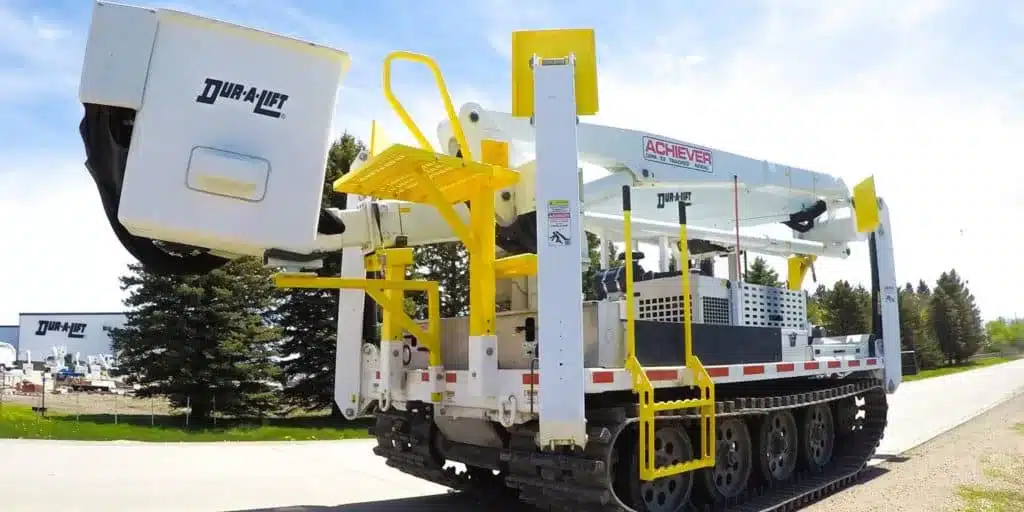
Choose McClain & Co., Inc. for Quality and Service in Bucket Truck Rentals
If you need a bucket truck rental, you can trust McClain & Co., Inc. to provide you with the best equipment and customer service. We have a range of bucket trucks to suit your needs, including the D.P.M.-52 D.U., a tracked aerial lift that can handle any terrain.
The D.P.M.-52 D.U. is a powerful and versatile machine that can climb a 40-degree slope and cross through up to three feet of water. It can also be used as a single-person material handling basket or as a two-man personnel lift. It has 29-inch-wide tracks that produce only 2.5 PSI ground pressure, and a boom that can reach up to 67 feet high and 31 and a half feet sideways.
At McClain & Co., Inc., we are committed to your success. We will help you select the best bucket truck and under bridge inspection equipment rentals for your project. You can request a quote from us today and schedule your rental with us.
If you have any questions or want to learn more about our bucket trucks or other under bridge inspection unit rentals, you can contact us by calling 1.888.889.1284 or emailing [email protected].

